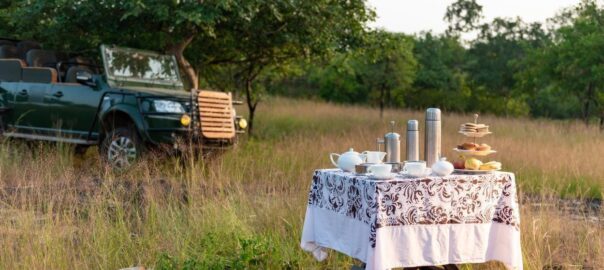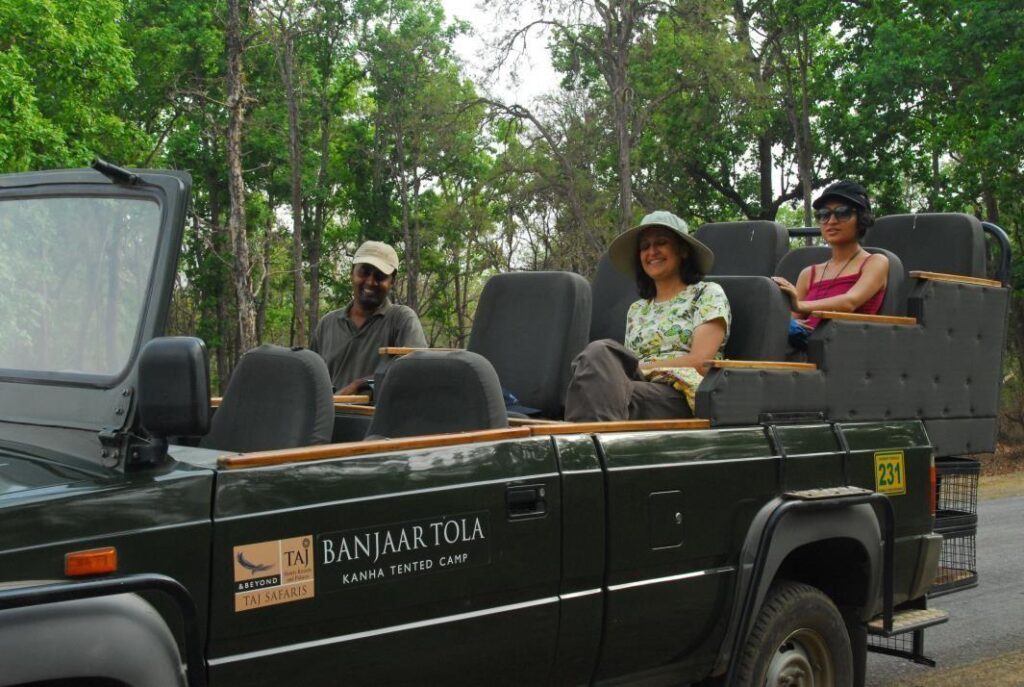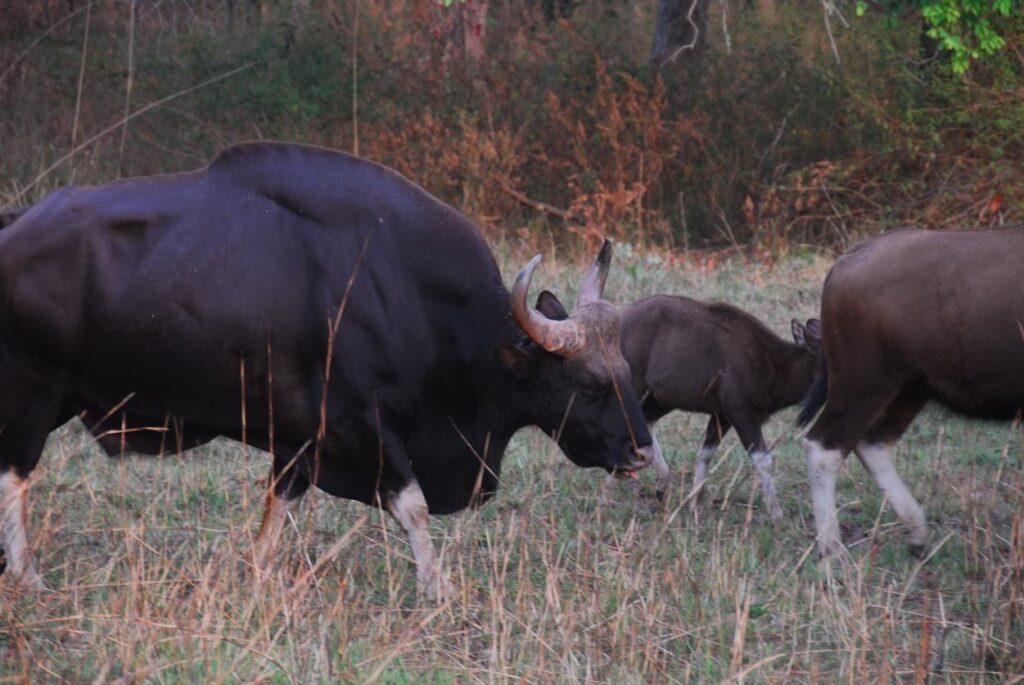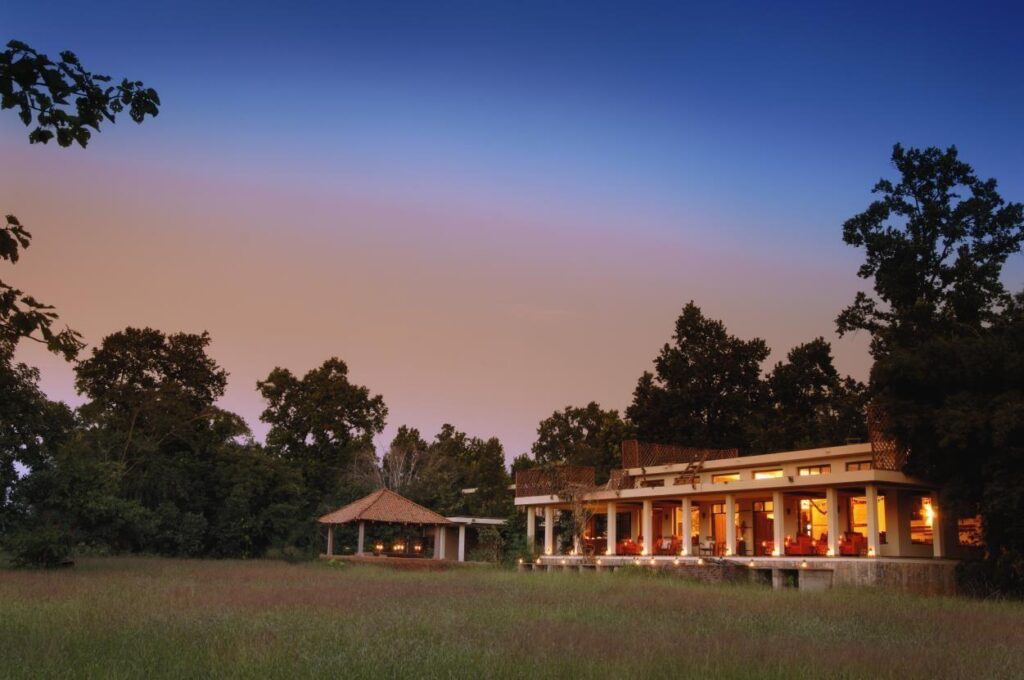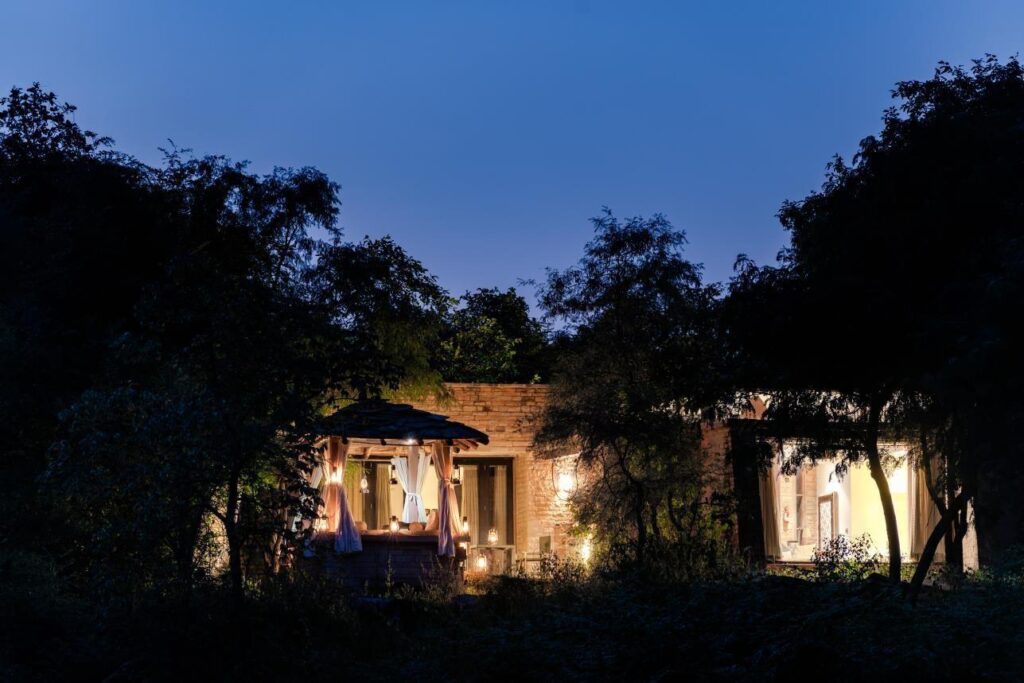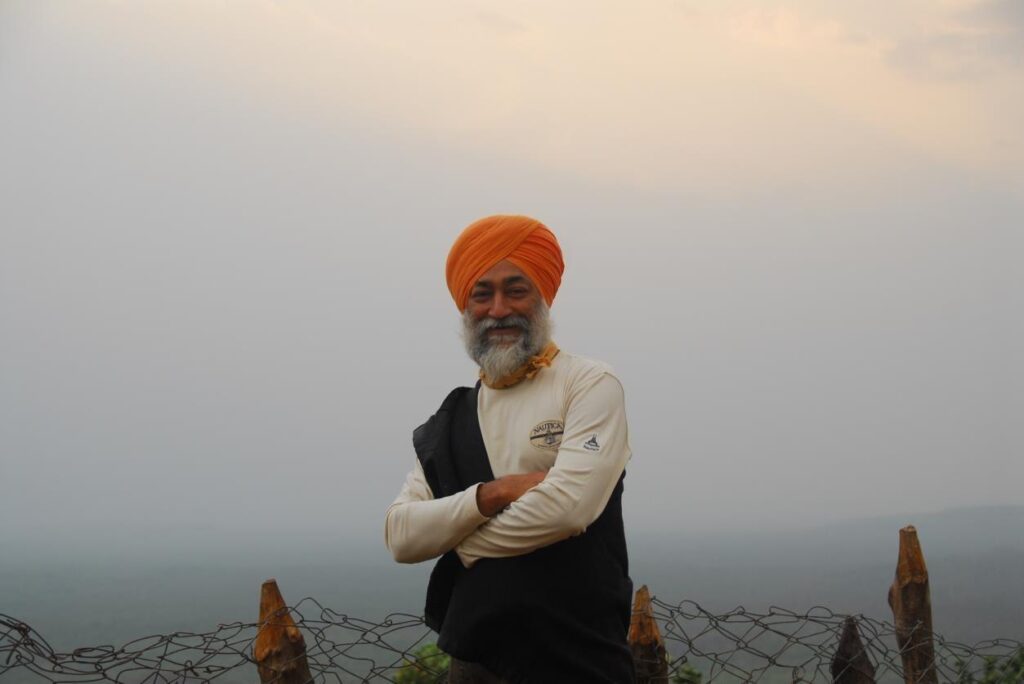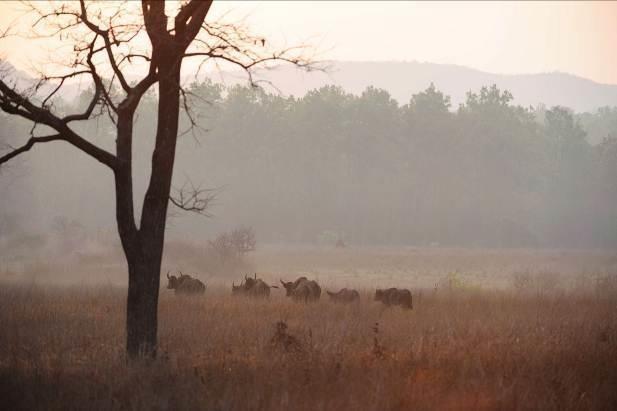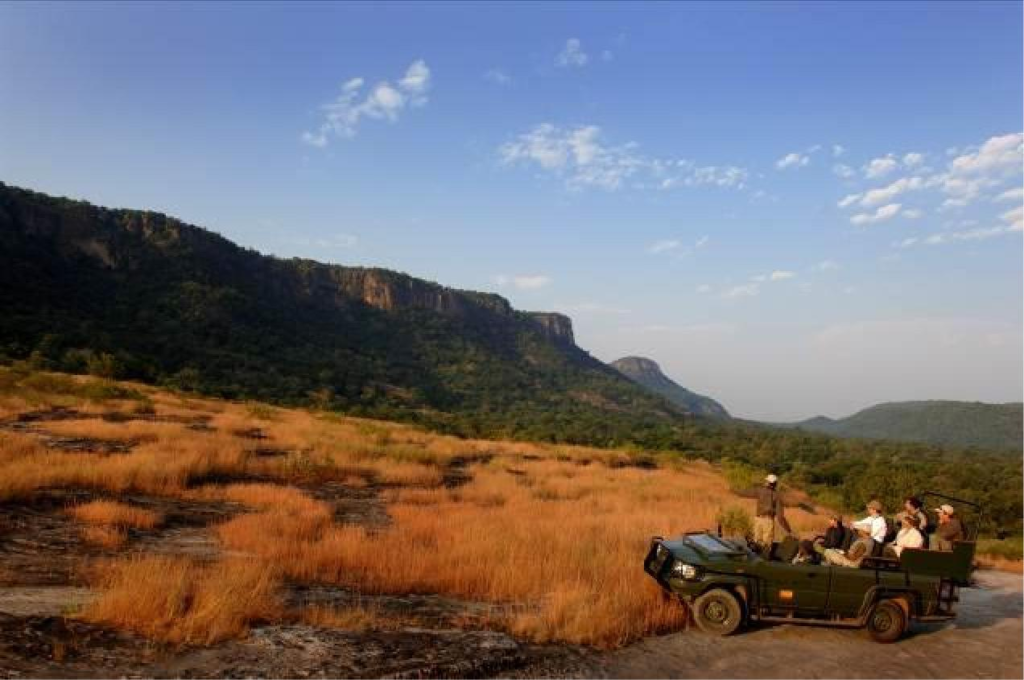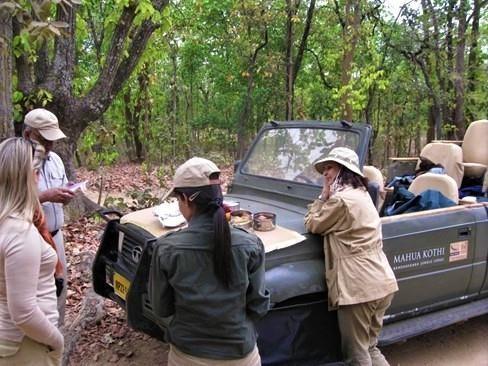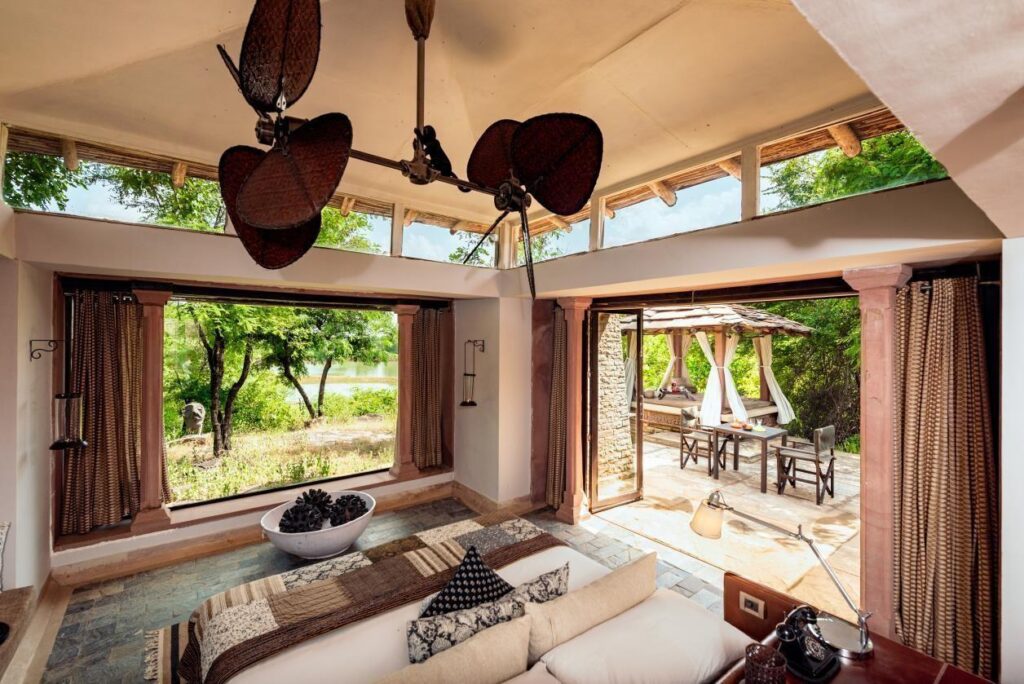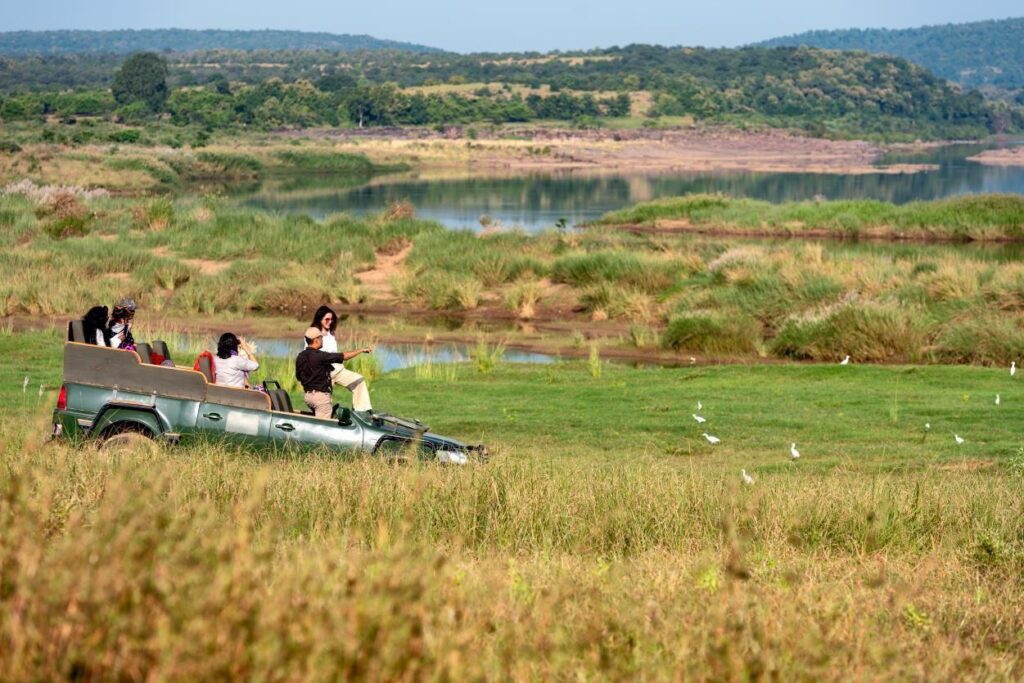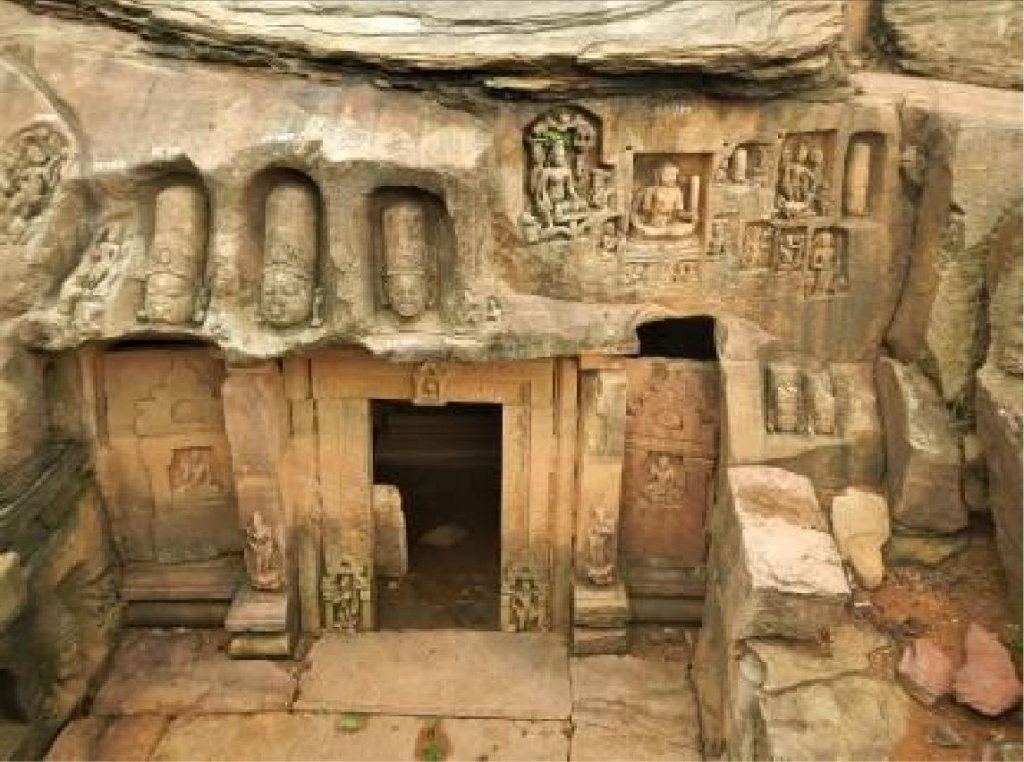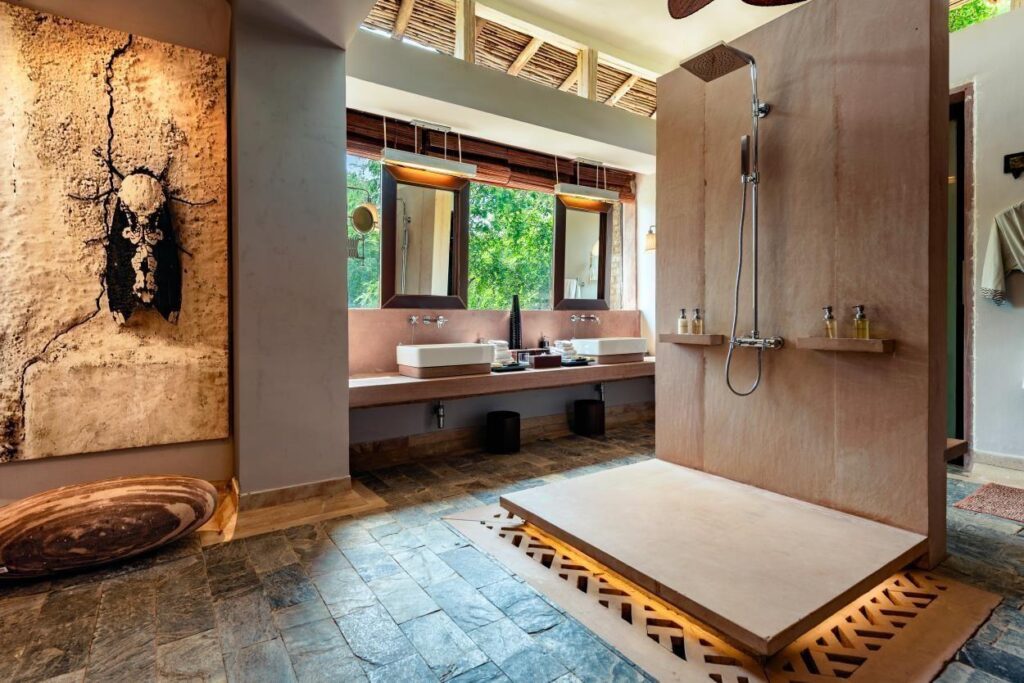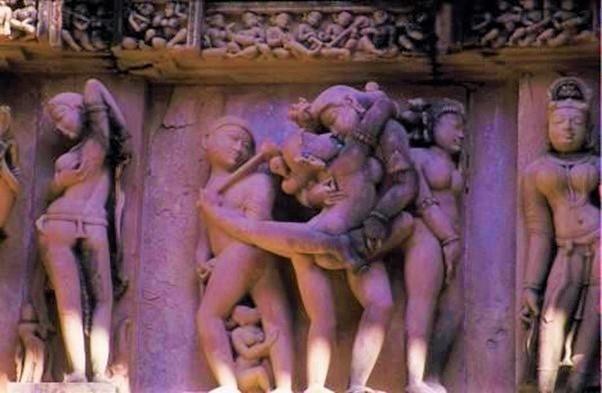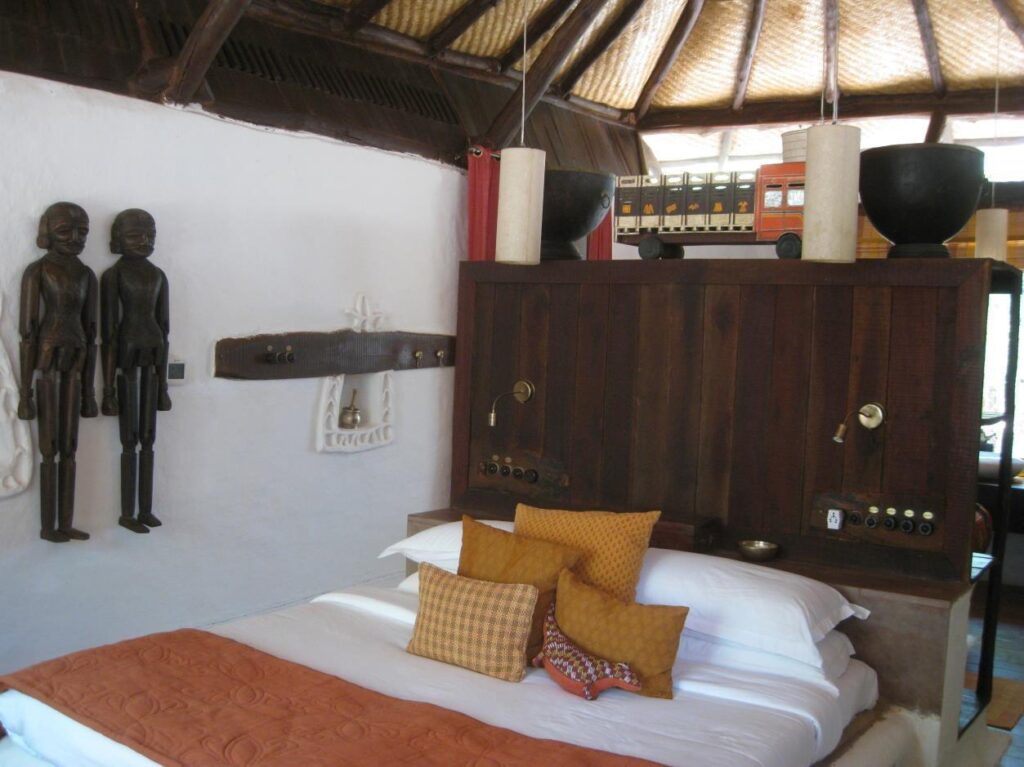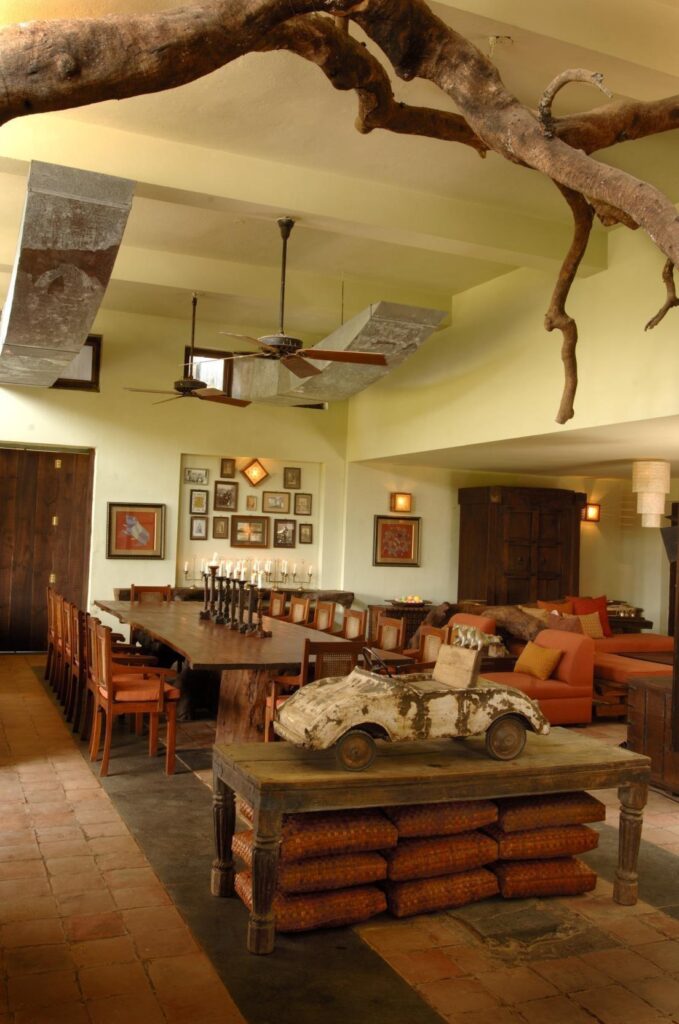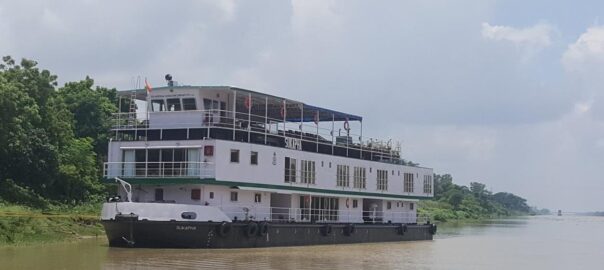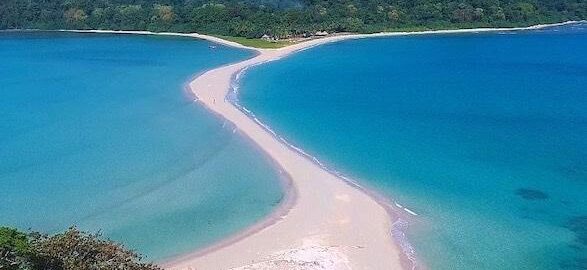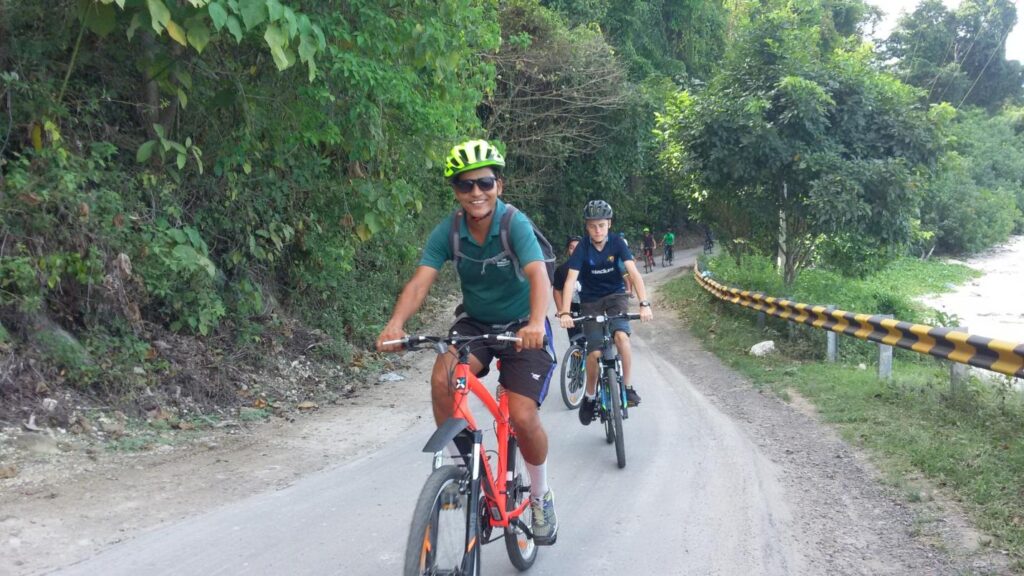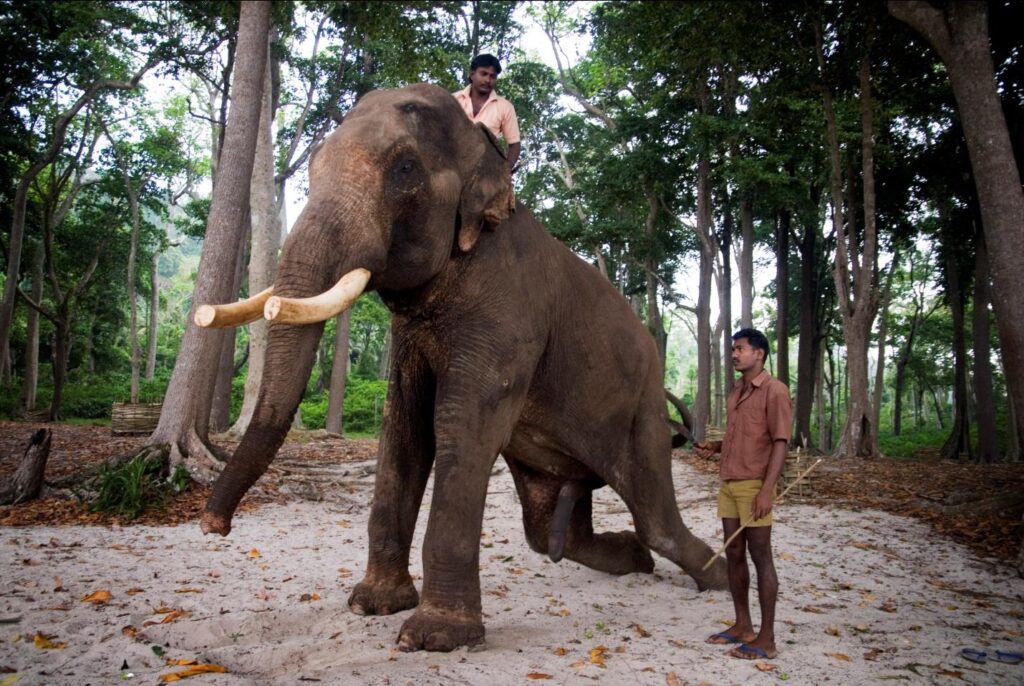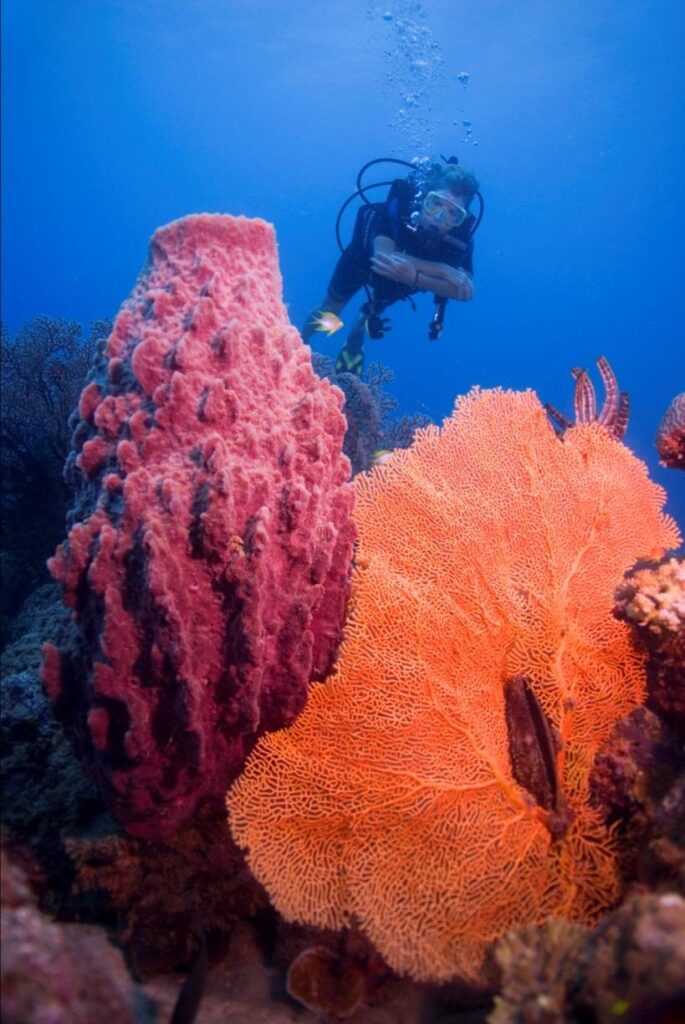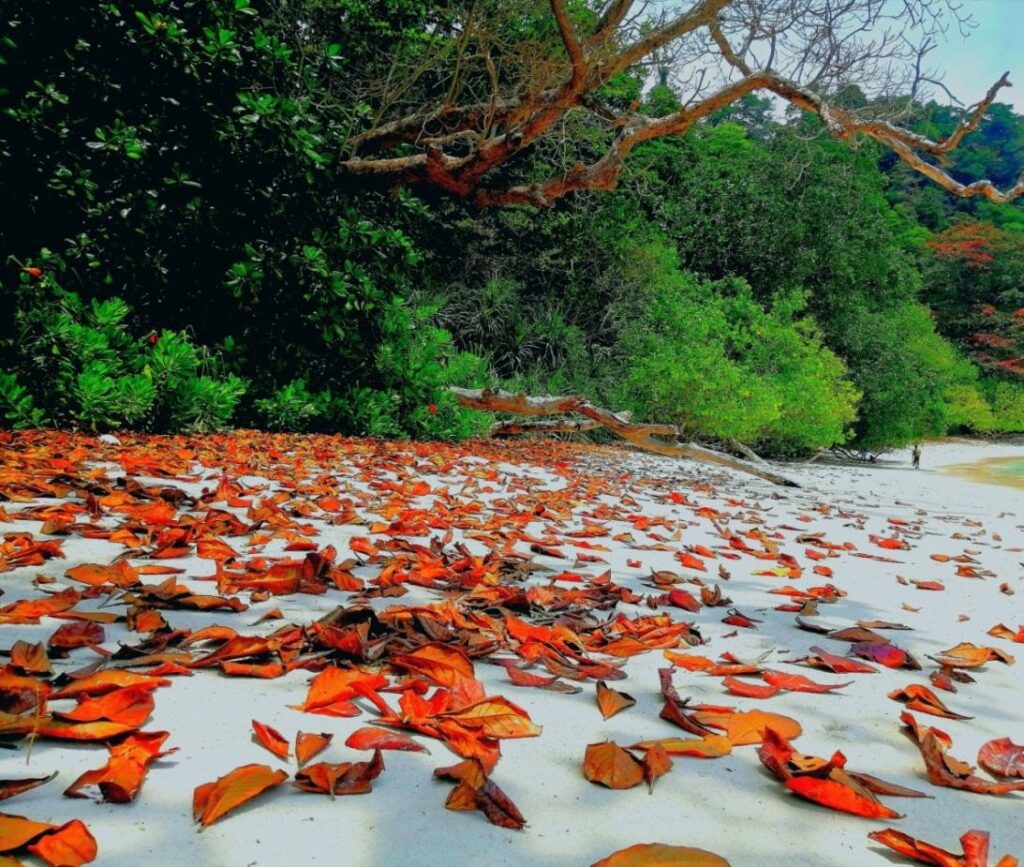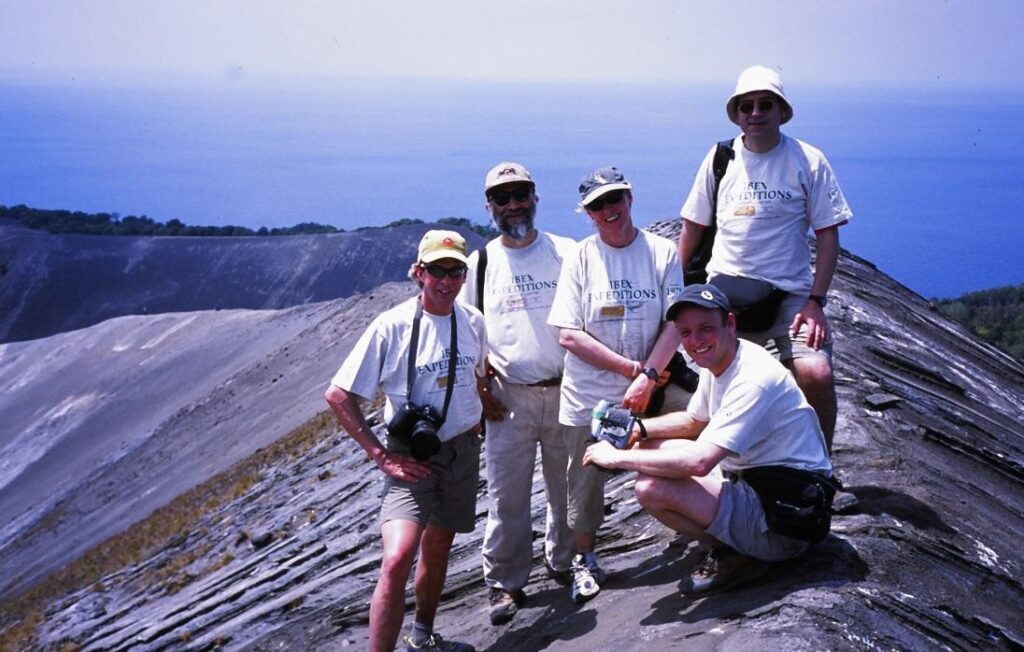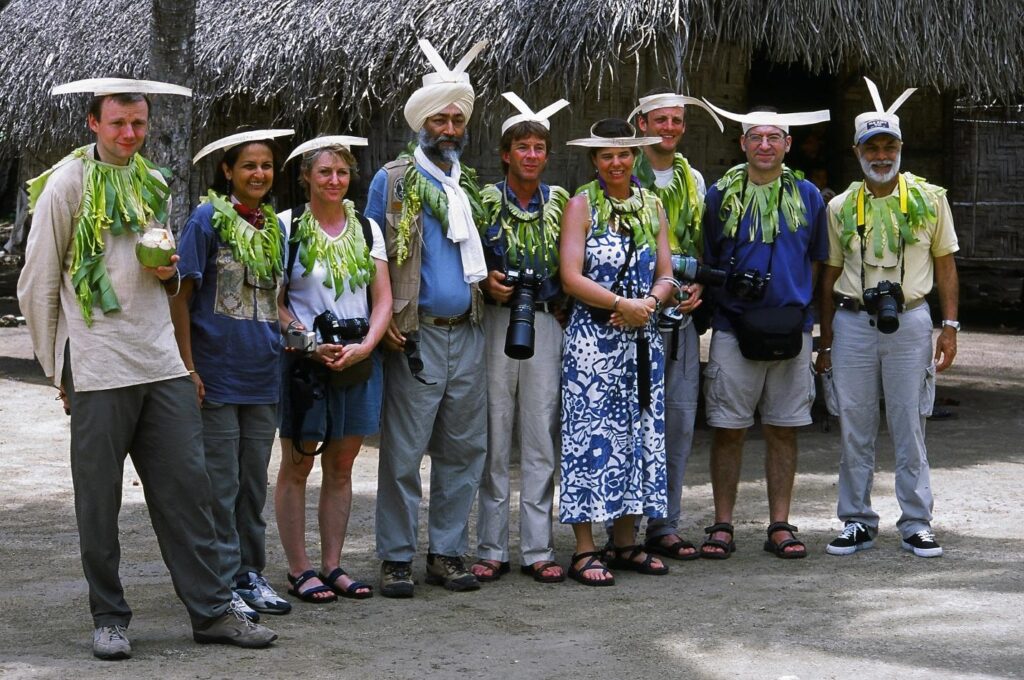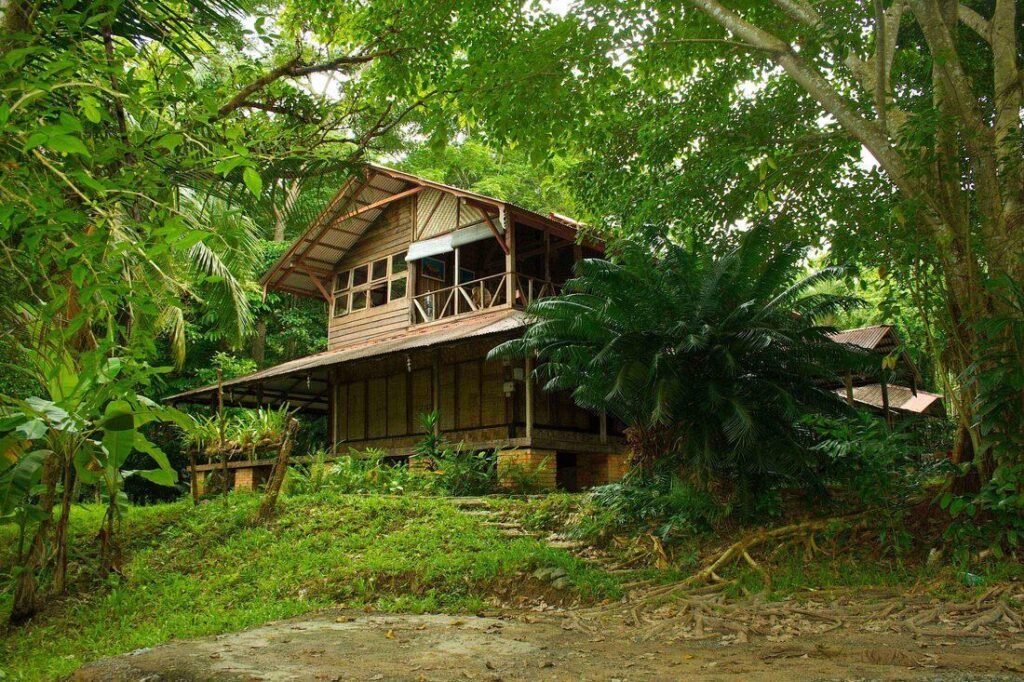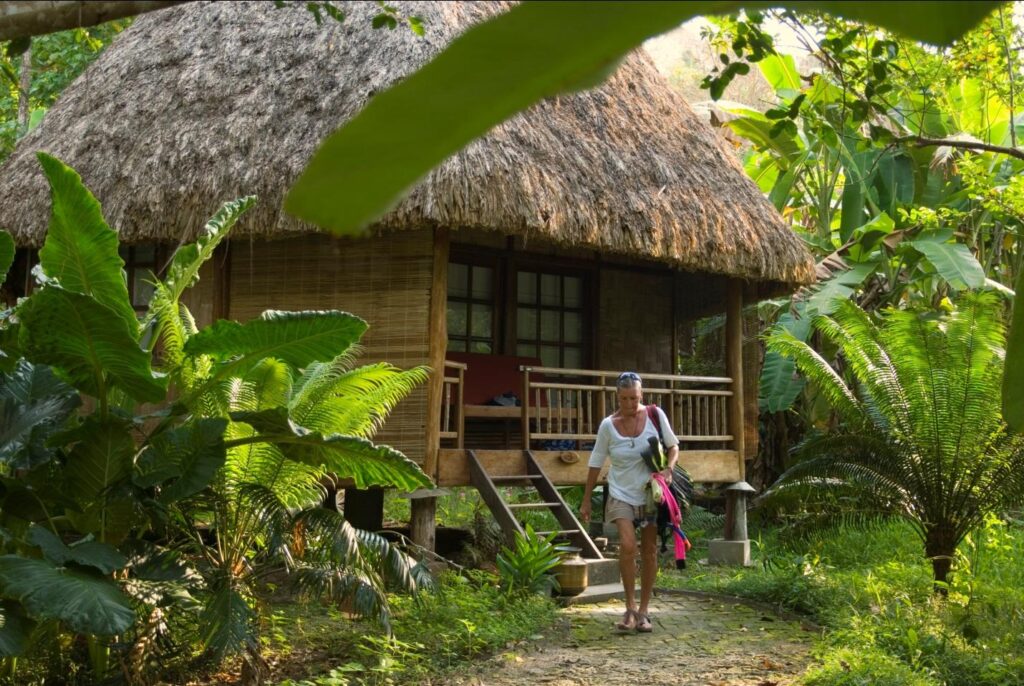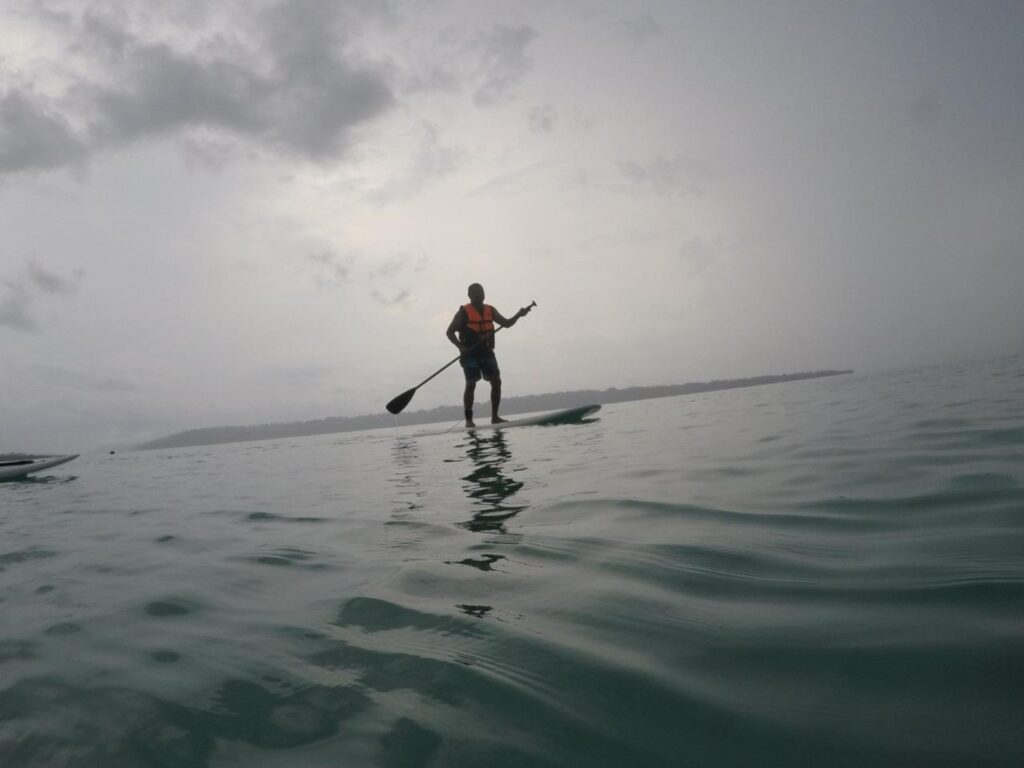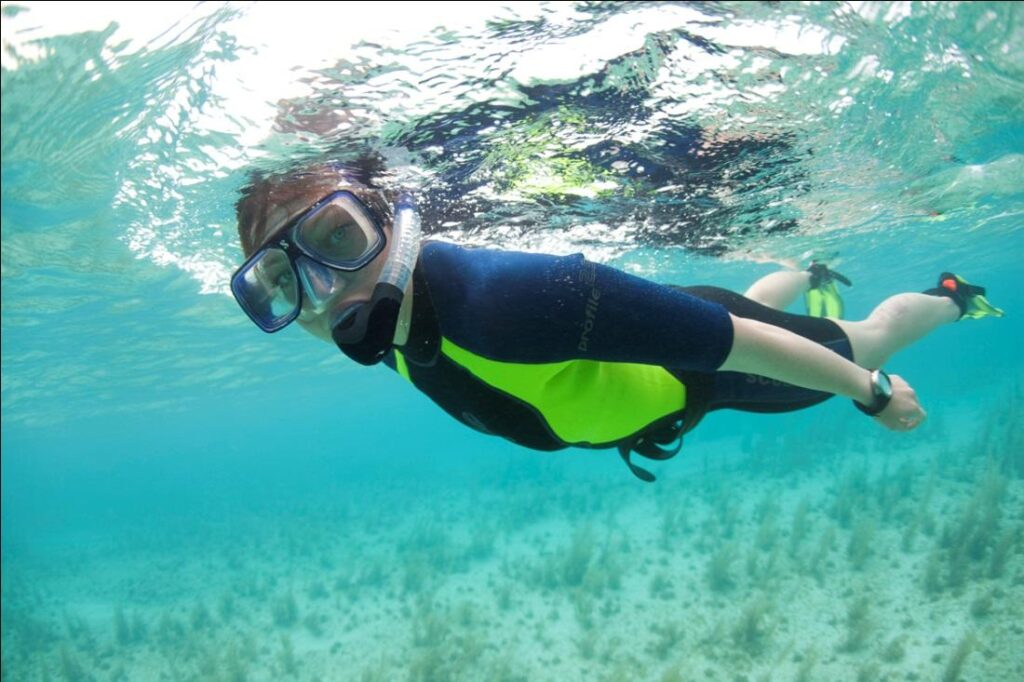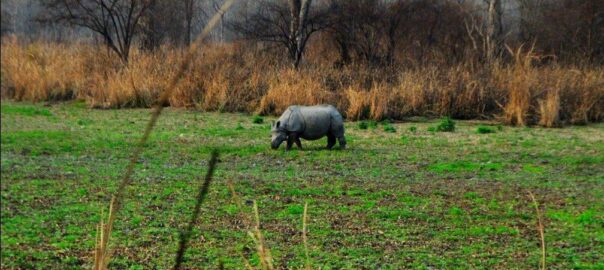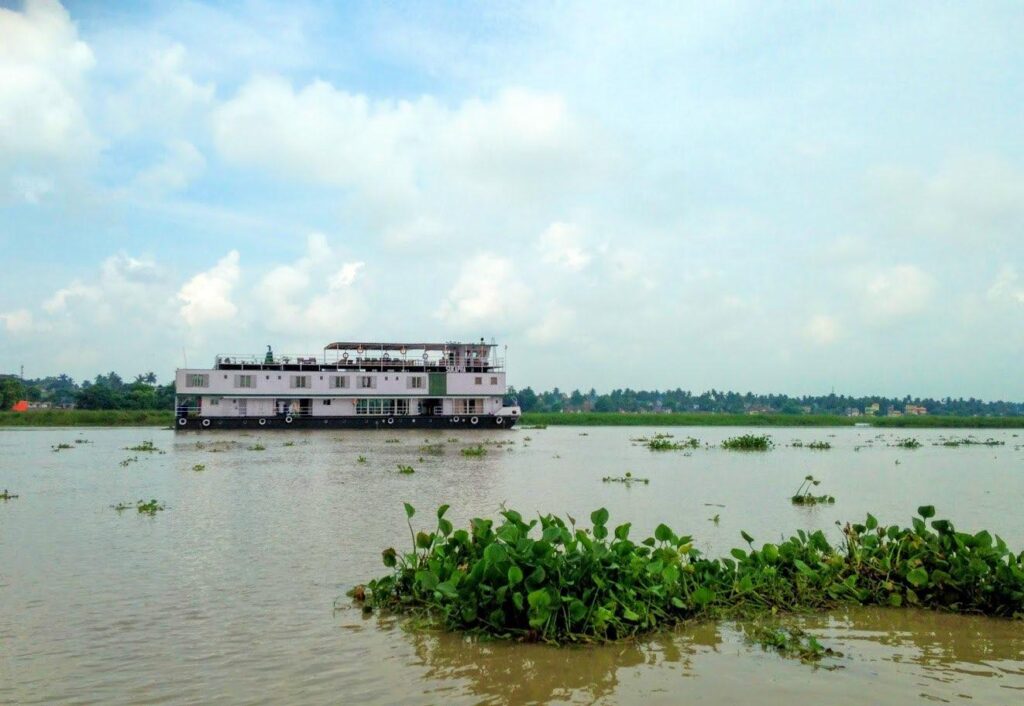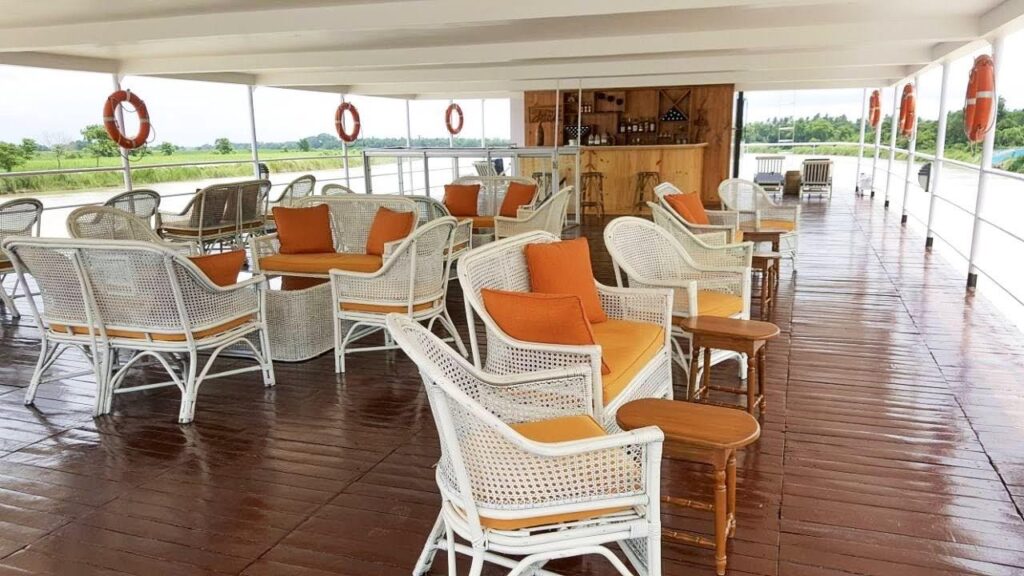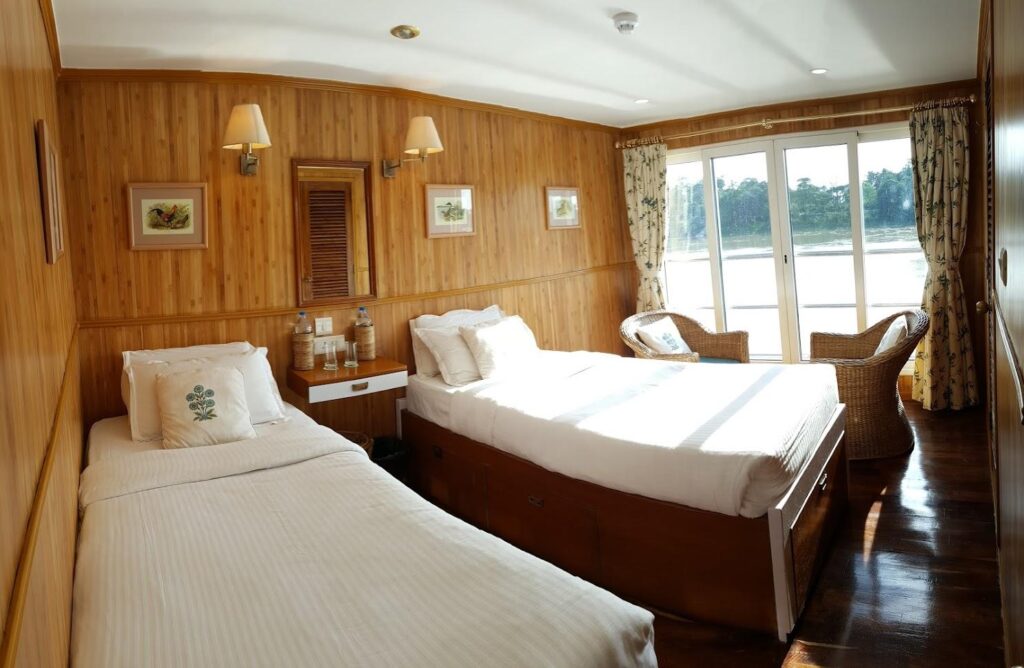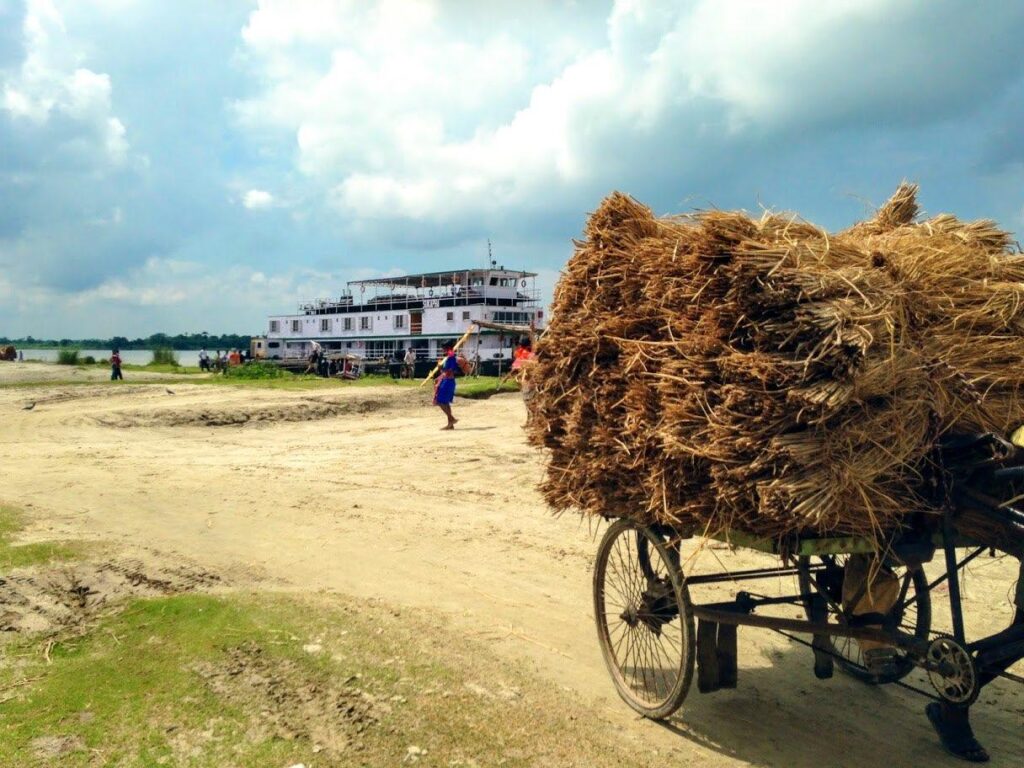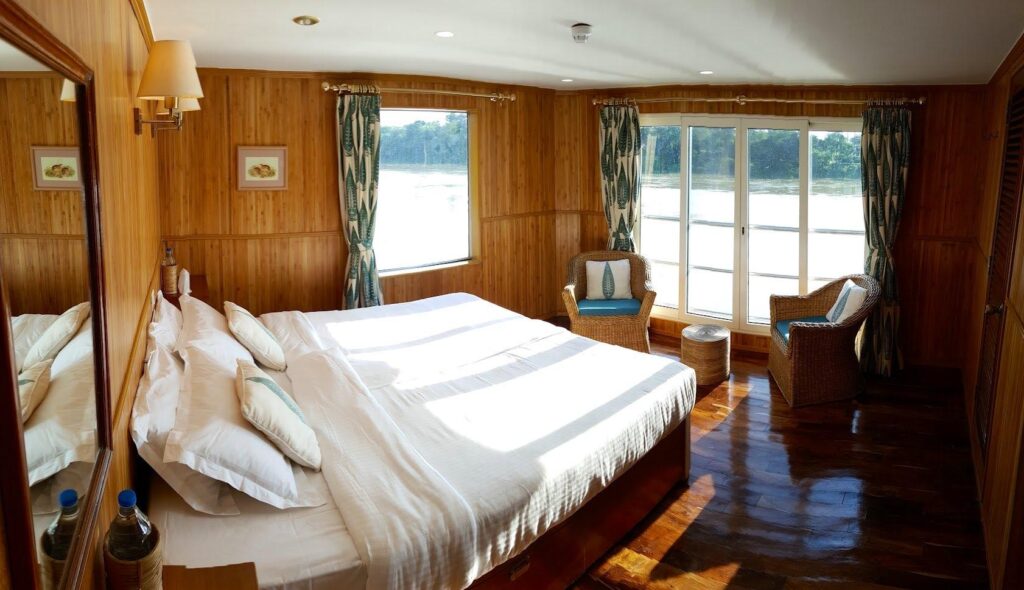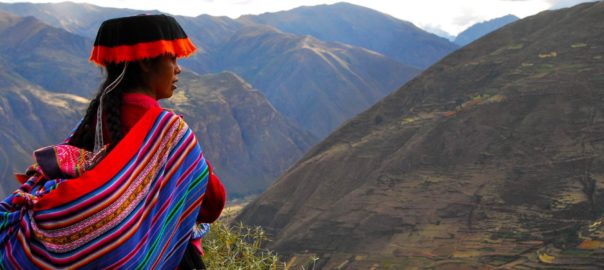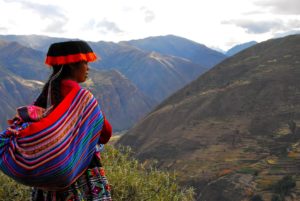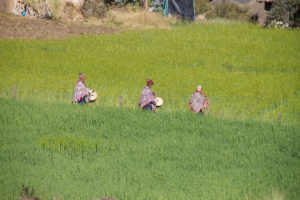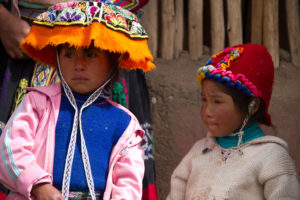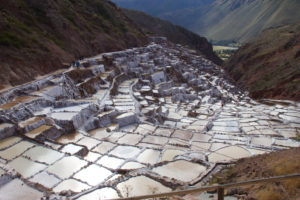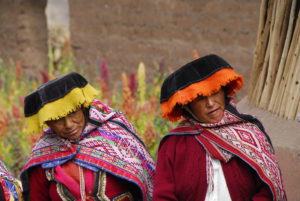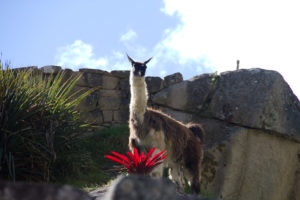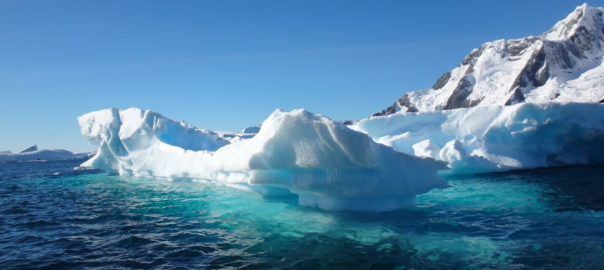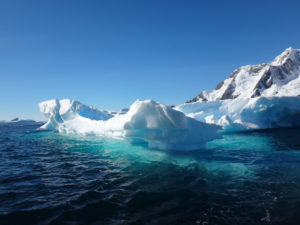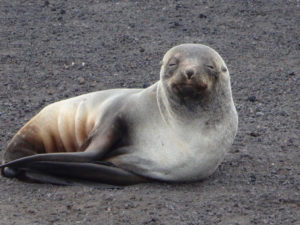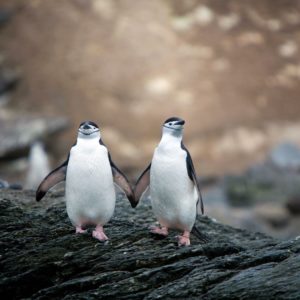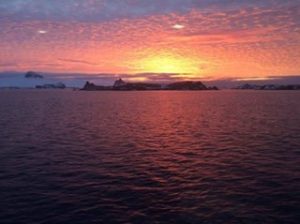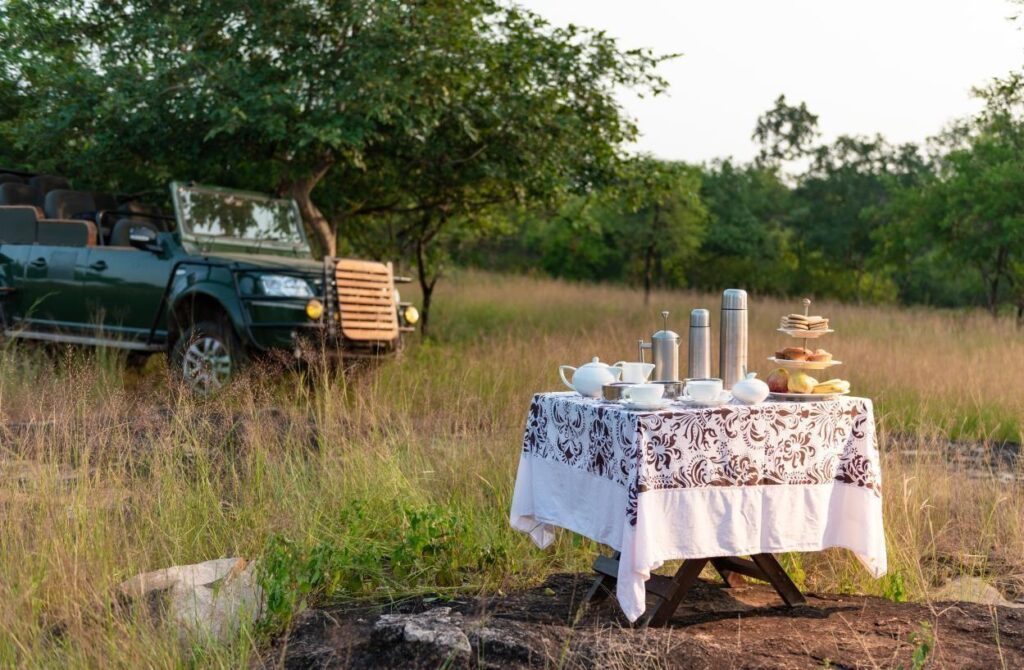
On this exciting new adventure, Anita & Mandip Soin invites you to celebrate the outdoors and the freedom to explore it with a deep sense of gratitude and respect for the wilderness we must protect.This is a celebration of the Indian tiger population that has risen to 2967 tigers as of 2018.We enjoy not just the wilderness and natural heritage of India but explore the fascinating built heritage of this region.
This journey supports the World Wide Fund for Nature ‘Give back to Nature’ programme.
A soft and mystical land, peppered with ancient temples and forts, where the forests are teeming with wildlife and are punctuated by ionic cities like Khajuraho with its ancient erotic temples.Here you will find many stunning historical monuments, a plethora of national parks and a rural lifestyle that will take you back to the Kipling India of our childhood.Jungle Book brought to life our first interaction with Mowgli, Shere Khan, Bagheera, Baloo and other lifelike characters running free in the jungles. On this journey, we relive the delight by visiting their abode.
About Ibex Expeditions & Taj Safaris
Ibex Expeditions, celebrates over 40 years of excellence in bespoke adventure, safari and luxury travel in India since 1979. Recognised for their deep environmental policies, Ibex has been conferred four international and two National awards.Led by Explorer, Mandip Singh Soin, and the only Indian to receive the Citation of Merit by the Explorers Club, USA for his diverse adventures. Both Mandip and his wife Anita have explored seven continents and believe firmly in protecting our wilderness and curating journeys for those that choose to tread lightly. Mandip is the Founder of Ibex Expeditions and the Founder President of the Responsible Tourism Society of India. He also serves on the Board of the Adventure Travel Conservation fund.
Taj Safaris lodges from the family of the Taj Hotels group redefines luxury and environmentally friendly comfort amid nature furnished with greenery! Taj Safari lodges offers an enthralling experience and the philosophy is to maintain sustainability to the highest level with a low footprint in harmony with the local community’s needs. They offer the best experiences through their highly trained Naturalists.
This journey designed by Ibex Expeditions & Taj Safaris takes us through the Panna National Park with the Pashan Garh lodge set in 200 acres of private wilderness; onto the Mahua Kothi lodge set in a 45 acre private forest in the Bandhavgarh National Park in the Vindhya hills and finally, to Banjaar Tola set in a 90 acre Sal forest on the banks of the river in Kanha.The heart of India’s wild is home to the Bengal tiger, leopard, wild boar, antelope, and more.When you travel with us on this journey, you support the Worldwide Fund for Nature’s Give back to Nature program to ensure other species of wildlife are protected to eternity.
Highlights:
- An experience to enjoy a personally led journey with explorers Mandip & Anita Soin.
- Exploring three of Central India’s premier wildlife forests.
- Tracking wildlife including tiger, leopard, wild boar, and a variety of antelope, birds and more.
- Stay at the charming Pashangarh lodge, Mahua Kothi lodge, and Banjaar Tola lodge.
- Visiting the Kalinjar fort.
- A ‘give back’ component towards the Give Back to Nature program of the World-Wide Fund for Nature India.
- A night safari at Pashangarh, Panna.
- Jungle safaris at all parks in private jeeps.
- A nature walk and village visit at Mahua Kothi, Bandhavgarh.
- A cooking class at Banjaar Tola, Kanha.
- A visit to a tribal village and to the Kanha Museum of Life and Art in Kanha.
ITINERARY
07 March Arrive Jabalpur by flight from Delhi – Panna National Park
We take an early morning departure, explorer style to reach Jabalpur by 0800 hours and continue to Panna National Park by road, 220 Kms away and check into the Pashan Garh lodge. 4-5 hours Today in the late afternoon, we will take a short bird watching walk within Pashangarh and later tonight, we will do a night safari in the buffer area of the park.
Pashan Garh is a unique lodge nestled in the untamed wilderness in a 200-acre forest. Here we have a unique opportunity of enjoying a night safari. The habitat restoration initiative that the Taj Safaris team has undertaken has resulted in a green cover.Panna is situated in the Vindhya Hill range and spreads over the Panna and Chhatarpur districts in the northern part of Madhya Pradesh. Panna National Park is the most important protected area in the north- central highlands of India, as it links the eastern and western populations of wild animals through the Vindhya ranges.Situated just 40 km from the world-famous temples at Khajuraho, Panna National Park is located along the banks of the Ken River. The Park, with its deep ravines, cascading waterfalls and thick teak forests, is predominantly a plateau, with sprawling flatlands punctuated by hills, deep valleys, and gorges. The terrain is largely rocky and uneven.There are mixed dry deciduous forests with short grasses and open woods. Lower altitudes are characterized by taller grasses and closed woodlands. Common bamboo also occurs on hilly slopes and gorges.
Home to the majestic tiger, guests may also see leopard, wolf, hyena, jackal and sloth bear. The reserve is also well known for sightings of Nilgai, Sambar, chital, wild boar, and Indian crocodile.
│Pashan Garh Lodge│Lunch and dinner
│Lunch and dinner
08 March -Panna National Park
Early morning, we will have a wake-up tea, after which we depart for a jungle safari accompanied by a resident naturalist, with a break for a picnic breakfast.After a morning of sightings, we return to the lodge.Reminiscent of meeting Fred, Barney and the Flintstones family, you stay in stylish stone cottages huddled atop a hill, facing a waterhole and forest, and await eagerly to see an antelope wandering in the wild and perhaps, seeing the big cat. Inspired from the local dry-packed stone houses of the region, the uneven stones add to its charm.
The crocodile is omnipresent greeting you and the interiors are a contemporary mix of chocolate linens, block-printed black silks, celadon cotton and cotton lace chandeliers.After lunch, we head into the forest again for another park ride in private jeeps.This evening we will enjoy a talk by Mandip titled ‘Tales of an Explorer’, an anecdotal, humorous account of four decades of living on the edge in the outdoors.
09 March – Panna National Park
After breakfast, we will proceed on an excursion to the Kalinjar fort which is 60 Kms away.
│Pashan Garh Lodge│Breakfast, lunch, and dinner
Many decisive battles were fought for the possession of this strategically located fort in ancient, medieval and modern times. The fort is also symbolic of cultural and religious glory. The famous temple here is the Neelkantha, the tallest Kala Bhairava image and a number of sculptures.After lunch, we will drive to Khajuraho town for a guided tour of the temples.The temples at Khajuraho were built under later Chandela kings between 950 and 1050 AD in a truly inspired burst of creativity. Of the original 85 temples, the 25 surviving are among the finest in India. They are built mostly of fine sandstone from Panna in shades ranging from pink through buff to pale yellow although granite was used.There is a belief that the erotic temple sculptures illustrate Kama Sutra, the sensuality outside the temple contrasting with the serenity within. The name Khajuraho is derived from Khajura-date palm, which grows freely in the area and perhaps because there were two golden khajura trees on a carved gate here.
We return to the lodge by late evening.
│Pashan Garh Lodge│Breakfast, lunch, and dinner
09 March -Panna National Park – Bandhavgarh National Park (200 km, 4-5 hours)
This morning, we head for our next destination of Bandhavgarh. We reach for a late lunch.Late afternoon we will proceed for a guided nature walk. The nature trails offered in the buffer zone of the park is a wonderful time to get acquainted by the smaller creatures, be they butterflies, beetles, and a multitude of wildflowers.
│ Mahua Kothi Lodge│Breakfast, lunch, and dinner
This compact park with a core area of 105 sq. km and a buffer zone of 437 sq. km is in the Vindhya hills. It is famous as the place in which the white tiger originated and before becoming a National Park in 1968, it was the game preserve of the Maharajas of Rewa.The management has embarked on a conservation program and protection from disease, fire, grazing, and poaching have all been factors in the recovery of the wildlife area. It is set in rugged hills and marshes that used to be perennial and now support a vast grassland savanna. There are also interesting cave shrines that are scattered around the park.
10 March -Bandhavgarh National Park
Early morning, we will head to the park for a game drive accompanied by expert Naturalists. We will look for not just the tiger but all species of fauna and flora. We will also stop for a picnic breakfast.
After lunch, we head out into the forest for another safari and return by evening to the lodge.
│ Mahua Kothi Lodge│Breakfast, lunch, and dinner
11 March -Bandhavgarh National Park
After breakfast, we will visit a local village and interact with the locals and see their untouched way of life. These villages are on the periphery of the park where farming is practiced in age-old methods with simple tools and ingenuity. Tribes like Baiga, Gond and Kol amongst others, live in homes plastered with cow dung.We then return to the lodge for lunch followed by an afternoon game drive in search of leopards, tigers and more.Tonight, we will sit beneath the Mahua tree and have dinner. The tall tree stands at the edge of the grassland and here we enjoy a special dinner adorned by lanterns. This dinner is a unique dining experience with barbecue cuisine.
│ Mahua Kothi Lodge│Breakfast, lunch, and dinner
12 March -Bandhavgarh National Park – Kanha National Park (250 Kms, 5 hrs.)
After an early breakfast, we will drive to Kanha National park with a packed lunch.The afternoon is free and later we can enjoy an optional cooking class by the chef who will unveil simple tips on Indian cooking.
Banjaar Tola lodge│ Breakfast, lunch, and dinner
13 March -Kanha National Park
At dawn, we will leave in special jeeps of Banjaar Tola with our Naturalists through dense jungles and grasslands laden with mist and a deep orange orb for the sun in the sky.
Kanha is rich in biodiversity and has an excellent population of tigers and leopards. The Barasingha (Hard ground swamp deer) are the mascots of Kanha and herds can be seen in grasslands as well as in ponds feeding on aquatic plants.
After lunch, we will visit a nearby tribal village, interacting with the locals and learning about their ancient culture. Gond and Baiga are the two prominent tribes found here. These were a hunter-gatherer, forest-dwelling communities that practiced a harmonious coexistence with nature. Remnants of that lifestyle can still be glimpsed here, although the younger generations are fast adapting to modern ways.
│ Banjaar Tola lodge│ Breakfast, lunch, and dinner
14 March -Kanha National Park
This morning we head into forest to view wildlife of the area and return to the lodge for lunch.After lunch, we will visit the Kanha Museum of life and art. The museum showcases Gond and Baiga tribal traditional paintings that draw inspiration from forests and wildlife. At 1430 hours, we will return to the park for another drive looking for gaur and jackals.This evening we have a farewell bush dinner with lanterns and a rustic wooden cart. Some local delicacies like the Baiga chicken will be served. The Baiga dancers in traditional dress move lithely as the compelling drumbeats reverberate.
│ Banjaar Tola lodge │ Breakfast, lunch, and dinner
